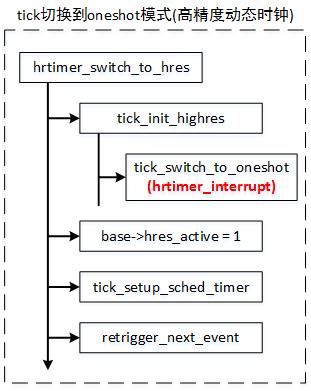- Linux驱动开发学习入门第一篇
柴工002
linux驱动开发学习
一.如何学习Linux驱动Linux驱动开发基础Linux驱动开发是指为Linux操作系统创建能够控制和管理硬件设备的软件模块的过程。驱动程序是操作系统内核的一部分,它们负责与硬件设备通信,确保硬件能够正常工作。Linux内核提供了一个丰富的框架和API,用于简化驱动程序的开发。学习资源和教程对于初学者来说,有许多在线资源和书籍可以帮助理解Linux驱动开发的概念和技术。例如,《Linux设备驱动
- 【网络】Linux 内核优化实战 - net.ipv4.tcp_fin_timeout
Linux性能优化原理和实战网络linuxtcp/ip
目录1.TCP连接关闭过程与FIN_WAIT_2状态2.参数作用3.参数取值与影响4.使用场景与建议5.相关参数6.如何配置该参数临时生效(重启后失效):永久生效(需重启或重载配置):7.性能优化建议8.监控与故障排查net.ipv4.tcp_fin_timeout是Linux内核中的一个TCP参数,用于控制TCP连接在FIN_WAIT_2状态下的超时时间。以下是对该参数的详细解析:1.TCP连接
- 【网络】Linux 内核优化实战 - net.ipv4.tcp_max_orphans
锅锅来了
Linux性能优化原理和实战网络linuxtcp/ip
目录1.什么是“孤立TCP连接”?2.参数作用3.参数取值与含义4.使用场景与建议5.相关参数6.如何配置该参数临时生效(重启后失效):永久生效(需重启或重载配置):7.性能优化建议8.监控与故障排查net.ipv4.tcp_max_orphans是Linux内核中的一个TCP参数,用于控制系统中孤立(orphaned)TCP连接的最大数量。以下是对该参数的详细解析:1.什么是“孤立TCP连接”?
- 【读书笔记】「等到 Linux 6.17 就分手」:Bcachefs 背后的技术与流程之争
CodeWithMe
读书笔记linuxlinux服务器运维
「等到Linux6.17就分手」:Bcachefs背后的技术与流程之争“我真的不太愿意继续参与。而我们唯一真正达成一致的,大概就是——‘我们已经结束了’。”——LinusTorvalds最近,Linux内核社区再次爆发激烈争论,主角是近年备受关注的新一代文件系统——Bcachefs,以及它的作者KentOverstreet与内核“守门人”LinusTorvalds之间的冲突。这场争议的焦点,并不在
- 【Note】《深入理解Linux内核》Chapter 16 :深入理解 Linux 文件访问机制
CodeWithMe
读书笔记linuxlinux运维服务器
《深入理解Linux内核》Chapter16:深入理解Linux文件访问机制关键词:VFS、文件描述符、structfile、structinode、open、read、write、close、dentry、权限校验、file_operations、O_NOATIME、权限继承一、概览:Linux文件访问路径在Linux中,几乎一切资源都可以通过“文件”的形式访问。文件访问不仅涵盖传统的磁盘文件,
- Linux 6.15 内核发布,新功能
Imagine Miracle
Linux内核Linuxlinuxkernel操作系统
这是内核发布周末,Linux6.15刚刚发布,它有大量的改进,但也有一些变化在开发人员中引起了一些分歧。LinusTorvalds以其标志性的自由放任风格在Linux内核邮件列表(LKML)上宣布Linux6.15稳定版本发布,并指出在最后的冲刺中“nothinglooksparticularlyscary”(“看起来没有什么特别可怕的”),所以他很高兴签字。“Variousrandomsmall
- 基于Clangd索引Linux内核源代码,提供跳转和补全
yann_qu
linux服务器内核LSPVSCodeNeovimVim
基于Clangd索引Linux内核源代码,提供跳转和补全适用于Neovim、Vim、VSCode等支持LSP的编辑器。1操作示例1.1操作环境操作系统:Ubuntu20.04inwsl2编辑器:VSCodeLSP:Clangd内核版本:longterm5.15.1451.2准备工作由于gcc和clang并非完全兼容,使用gcc编译后生成的compile_commands.json中可能包含clan
- 银河麒麟操作系统 v10 中离线安装 Docker
ascarl2010
Docker信创dockereureka容器
银河麒麟操作系统v10中离线安装Docker1.查看系统版本2.查看Linux内核版本(3.10以上)3.查看iptabls版本(1.4以上)4.判断处理器架构5.离线下载Docker安装包6.移动解压出来的二进制文件到/usr/bin目录中7.配置Docker服务7.1编辑docker的系统服务文件7.2将下面的内容复制到刚创建的docker.service文件中7.3为docker.servi
- 编译ARM开发板的内核镜像(linux)
不霁何虹丶
内核linux内核ubootkernel嵌入式
编译内核其实本质上就是熟悉流程与配置的更改,本文暂时只介绍流程,对于更改,以后详谈。一点要注意:需要先安装arm-linux-gcc交叉编译器!切记!获取内核源码如果你有开发板,那么商家大多会给你资料,其中就有对应该开发板SOC的linux内核,如果里面没有对应的linux内核源码,那么本文不适合你了,你需要移植或自己找对应的内核源码。开始制作镜像既然已经获得了源码包,经过ubuntu下的tarx
- OpenHarmony vs Linux:分布式操作系统的终极对决
109702008
编程操作系统#linux系统linux分布式人工智能
副标题:从架构基因到场景适配,解析两大系统的分布式能力差异与未来演进引言:分布式操作系统的时代命题在万物互联时代,设备协同与算力融合成为刚需。OpenHarmony和Linux作为两大开源操作系统,代表了不同的技术路线:前者是原生分布式设计,后者是生态驱动演进。本文从分布式视角深度对比二者,为开发者提供选型参考。一、架构设计:原生支持vs生态补足能力维度OpenHarmonyLinux内核模型微内
- Docker企业级应用:从入门到生产环境最佳实践
一、Docker核心概念与架构1.1Docker技术栈Docker客户端Docker守护进程镜像仓库容器运行时Linux内核命名空间控制组cgroups联合文件系统1.2容器与虚拟机对比特性容器虚拟机启动速度秒级分钟级资源占用MB级GB级隔离性进程级系统级镜像大小10-100MB1-10GB运行性能接近原生有损耗二、Docker全生命周期管理2.1容器操作核心命令#容器全生命周期管理dockerc
- linux应用编程学习
xyjdwxzxxbw
linux学习服务器
查man手册man1xx查linuxshell命令,man2xxx查API,man3xxx查库函数文件平时是存在块设备中的文件系统中的,我们把这种文件叫静态文件。当我们去open打开一个文件时,linux内核做的操作包括:内核在进程中建立了一个打开文件的数据结构,记录下我们打开的这个文件;内核在内存中申请一段内存,并且将静态文件的内容从块设备中读取到内存中特定地址管理存放(叫动态文件)。打开文件后
- Linux 基础入门操作 第十四章 .U-Boot 编译 1
1U-Bboot编译1.1UBOOT介绍U-Boot,全称UniversalBootLoader,是遵循GPL条款的开放源码项目。从FADSROM、8xxROM、PPCBOOT逐步发展演化而来。其源码目录、编译形式与Linux内核很相似,事实上,不少U-Boot源码就是相应的Linux内核源程序的简化,尤其是一些设备的驱动程序,这从U-Boot源码的注释中能体现这一点。但是U-Boot不仅仅支持嵌
- 【Linux内核及内核编程】Linux下的C编程特点
byte轻骑兵
#嵌入式Linux驱动开发实战linux运维服务器
在Linux世界里,C语言始终是核心编程语言之一。Linux内核及大量系统工具都基于C语言开发,这使得Linux环境下的C编程形成了一套独特的规范和特性。目录一、Linux编程风格:简洁实用的工程美学1.1命名规范:下划线的统治1.2缩进与括号:K&R风格的坚守1.3注释哲学:关键逻辑的精准描述二、GNUCvsANSIC:扩展特性的力量2.1语句表达式:让宏更强大2.2可变参数宏:灵活的接口设计2
- linux 中路由解决方案1
在Linux的路由表中,当存在多条默认路由(0.0.0.0)且它们的Metric值相同时,内核会根据其他因素决定优先使用哪条路由。在你的例子中,eth1和wlan0的Metric值均为1024,但系统优先选择eth1,可能原因如下:可能原因分析接口优先级(基于接口索引或名称顺序)Linux内核可能会根据网络接口的创建顺序或接口索引号(ifindex)决定优先级。通常,先初始化的接口(如eth1)会
- ubuntu 6.8.0 安装xenomai3.3
ZPC8210
ROSubuntulinux运维
通过以下步骤来获取和准备Linux内核6.8.0的源码,并应用Xenomai补丁:1.下载Linux内核6.8.0源码你可以从TheLinuxKernelArchives下载Linux内核6.8.0的源码。以下是具体步骤:访问内核官方网站:打开TheLinuxKernelArchives。找到对应版本的内核:在网站中找到内核6.8.0的下载链接。通常在v6.x目录下。下载源码:下载linux-6.
- 嵌入式Linux内核镜像生成过程
飘逸轻舞
linuxarm开发运维嵌入式
嵌入式Linux内核镜像生成过程嵌入式Linux系统的核心组件是内核,它是操作系统的核心部分,负责管理硬件资源、提供系统调用接口以及驱动设备等功能。在嵌入式系统中,将内核编译成镜像文件是部署系统的关键步骤之一。本文将介绍嵌入式Linux的内核镜像生成过程,并提供相应的源代码示例。获取Linux内核源代码首先,我们需要获取Linux内核的源代码。可以从Linux官方网站(www.kernel.org
- 【Prometheus】cAdvisor工作原理介绍
码上淘金
prometheus
cAdvisor(ContainerAdvisor)是Google开源的容器监控工具,专注于实时采集和暴露容器级别的资源使用数据。其底层实现基于Linux内核的多项技术,结合高效的事件驱动架构,实现对容器资源的细粒度监控。以下从核心机制、数据采集原理和架构实现三方面详细解析:一、核心依赖技术cAdvisor的监控能力建立在Linux内核提供的底层机制之上:cgroups(控制组)资源隔离与统计:c
- Java面试八股文(2023最新)--Linux面试题
月月崽
面试linux运维服务器
目录1.什么是Linux内核2.Linux的体系结构.4.基本命令5.如何查看最近1000行日志6.如何查端口号是否被占用7.查看当前所有已经使用的端口情况8.什么是硬链接和软链接?1.什么是Linux内核Linux系统的核心是内核,内核控制着计算机系统上的软硬件,在必要时分配硬件,并根据需要执行软件.系统内存管理应用程序管理硬件设备管理文件系统管理2.Linux的体系结构.Linux体系结构可以
- Android 发展历程
个人学习笔记安卓(android)是基于Linux内核的开源操作系统。主要用于移动设备,如智能手机、平板电脑、电视等,由Google公司及开放手机联盟领导及开发。2005年8月由谷歌收购注资HTC制造第一部Android手机2011年第一季度,android在全球的市场份额超过了塞班,成为全球第一2013年的第四季度,android平台手机的全球市场份额已经达到78.1%。2019年,谷歌官方宣布
- Android发展历程
雪碧聊技术
Androidandroid发展历程
目录一.Android发展历程①早期版本(2008–2010)②快速发展期(2011–2013)③设计革新与生态扩展(2014–2017)④AI与智能化时代(2018–2020)⑤近现代版本(2021–至今)⑥未来趋势一.Android发展历程安卓(Android)是一种基于Linux内核的自由及开放源代码的操作系统。主要使用于移动设备,如智能手机和平板电脑,由美国Google公司和开放手机联盟领
- 【linux kernel】devtmpfs文件系统分析
iriczhao
小生聊【linuxkernel】linuxlinux内核文件系统devtmpfsc
devtmpfs文件系统分析文章目录devtmpfs文件系统分析一、开篇二、devtmpfs简介三、devtmpfs内核源码分析(2-1)devtmpfs初始化(2-2)devtmpfs_init的调用一、开篇本篇文章主要从linux内核源码的角度分析devtmpfs文件系统。本篇作为分析过程的记录文章,以加深对devtmpfs文件系统的理解!(注)本篇文章所有源码出自linux内核版本:4.19
- Linux内核IPv4路由子系统深度剖析:FIB前端实现与设计原理
109702008
编程#C语言网络linux网络人工智能
深入理解Linux网络栈的核心组件:路由表管理、地址验证与事件处理机制引言在Linux网络栈中,IPv4转发信息库(FIB)是决定数据包传输路径的核心子系统。fib_frontend.c作为FIB的前端实现,承担着路由表管理、用户接口交互和网络事件响应等关键任务。本文将深入剖析这一关键文件的实现原理,揭示Linux路由机制的设计哲学。一、FIB前端整体架构/*核心数据结构*/structfib_t
- 【Note】《深入理解Linux内核》 Chapter 15 :深入理解 Linux 页缓存
CodeWithMe
读书笔记linuxlinux缓存spring
《深入理解Linux内核》Chapter15:深入理解Linux页缓存关键词:页缓存、address_space、radixtree、page、writeback、dirtypage、mmap、文件系统缓存、文件I/O性能优化、directI/O一、页缓存是什么?为什么重要?1.1定义页缓存(pagecache)是Linux内核用于缓存文件内容的内存区域,避免每次文件读写都访问磁盘。1.2页缓存的
- Buildroot,Ubuntu,Debian,Yocto 它们分别是什么,它们之间的具体关系是什么
玄奕子
嵌入式学习之Linux入门篇ubuntudebianlinuxBuildrootYocto
1.Buildroot定义:Buildroot是一个简化和加速嵌入式Linux系统开发过程的工具,提供一种容易、高效的方式来生成交叉编译工具链、根文件系统、内核映像和引导加载程序。Buildroot使用makefile和kconfig(和Linux内核使用的相同系统)来配置和构建整个嵌入式系统。适用场景:对于需要轻量级或高度定制的嵌入式系统,Buildroot非常适合,尤其是那些资源受限或对启动时
- 【网络】Linux 内核优化实战 - net.ipv4.tcp_timestamps
锅锅来了
Linux性能优化原理和实战网络tcp/iplinux
目录`net.ipv4.tcp_timestamps`详解1.功能与作用2.参数取值与含义3.启用/禁用的影响4.配置方法5.适用场景建议6.注意事项总结net.ipv4.tcp_timestamps详解net.ipv4.tcp_timestamps是Linux内核中一个与TCP协议相关的网络参数,用于控制是否启用TCP时间戳选项(TCPTimestampsOption)。该选项在RFC1323中
- 【Note】《深入理解Linux内核》Chapter 14 :深入理解 Linux 块设备驱动程序
CodeWithMe
读书笔记linuxlinux运维服务器
《深入理解Linux内核》Chapter14:深入理解Linux块设备驱动程序关键词:块设备、gendisk、请求队列、requestqueue、bio、pagecache、I/O调度器、通用块层、文件系统、磁盘管理一、块设备简介与特性1.1块设备定义块设备是可以被分成固定大小块(通常为512字节或4KB)进行读写的设备。与字符设备不同,块设备支持随机访问和缓存,是构建文件系统的基础。1.2典型块
- Linux内核深度解析:IPv4策略路由的核心实现与fib_rules.c源码剖析
109702008
编程#C语言网络linux网络人工智能
深入探索Linux网络栈的规则引擎,揭秘策略路由如何通过多级路由表实现复杂流量控制在Linux网络栈中,路由决策远不止简单的目的地址匹配。策略路由(PolicyRouting)允许根据源地址、TOS值、端口等复杂条件选择不同的路由路径。本文将深入剖析实现这一功能的核心源码——net/ipv4/fib_rules.c,揭示策略路由的运作机制。一、策略路由基础概念策略路由打破了传统路由基于单一目的地址
- 【Note】《深入理解Linux内核》 第十九章:深入理解 Linux 进程通信机制
《深入理解Linux内核》第十九章:深入理解Linux进程通信机制(ProcessCommunication)关键词:IPC、信号、管道、FIFO、消息队列、信号量、共享内存、套接字、内核对象、同步机制一、进程通信概述1.1为什么需要进程通信在Linux系统中,进程是资源隔离的基本单位,彼此间通常无法直接访问彼此的地址空间。因此需要一套机制,使得多个进程之间可以:交换数据;同步行为;发送通知;共享
- Android 安装使用教程
小奇JAVA面试
安装使用教程android
一、Android开发简介Android是Google推出的基于Linux内核的开源操作系统,广泛用于智能手机、平板等移动设备。开发Android应用主要使用Java或Kotlin编程语言,并借助AndroidStudio作为官方IDE。二、安装Android开发环境2.1安装JDK(JavaDevelopmentKit)Android开发需要安装JDK(推荐JDK11或17):下载地址:http
- Algorithm
香水浓
javaAlgorithm
冒泡排序
public static void sort(Integer[] param) {
for (int i = param.length - 1; i > 0; i--) {
for (int j = 0; j < i; j++) {
int current = param[j];
int next = param[j + 1];
- mongoDB 复杂查询表达式
开窍的石头
mongodb
1:count
Pg: db.user.find().count();
统计多少条数据
2:不等于$ne
Pg: db.user.find({_id:{$ne:3}},{name:1,sex:1,_id:0});
查询id不等于3的数据。
3:大于$gt $gte(大于等于)
&n
- Jboss Java heap space异常解决方法, jboss OutOfMemoryError : PermGen space
0624chenhong
jvmjboss
转自
http://blog.csdn.net/zou274/article/details/5552630
解决办法:
window->preferences->java->installed jres->edit jre
把default vm arguments 的参数设为-Xms64m -Xmx512m
----------------
- 文件上传 下载 解析 相对路径
不懂事的小屁孩
文件上传
有点坑吧,弄这么一个简单的东西弄了一天多,身边还有大神指导着,网上各种百度着。
下面总结一下遇到的问题:
文件上传,在页面上传的时候,不要想着去操作绝对路径,浏览器会对客户端的信息进行保护,避免用户信息收到攻击。
在上传图片,或者文件时,使用form表单来操作。
前台通过form表单传输一个流到后台,而不是ajax传递参数到后台,代码如下:
<form action=&
- 怎么实现qq空间批量点赞
换个号韩国红果果
qq
纯粹为了好玩!!
逻辑很简单
1 打开浏览器console;输入以下代码。
先上添加赞的代码
var tools={};
//添加所有赞
function init(){
document.body.scrollTop=10000;
setTimeout(function(){document.body.scrollTop=0;},2000);//加
- 判断是否为中文
灵静志远
中文
方法一:
public class Zhidao {
public static void main(String args[]) {
String s = "sdf灭礌 kjl d{';\fdsjlk是";
int n=0;
for(int i=0; i<s.length(); i++) {
n = (int)s.charAt(i);
if((
- 一个电话面试后总结
a-john
面试
今天,接了一个电话面试,对于还是初学者的我来说,紧张了半天。
面试的问题分了层次,对于一类问题,由简到难。自己觉得回答不好的地方作了一下总结:
在谈到集合类的时候,举几个常用的集合类,想都没想,直接说了list,map。
然后对list和map分别举几个类型:
list方面:ArrayList,LinkedList。在谈到他们的区别时,愣住了
- MSSQL中Escape转义的使用
aijuans
MSSQL
IF OBJECT_ID('tempdb..#ABC') is not null
drop table tempdb..#ABC
create table #ABC
(
PATHNAME NVARCHAR(50)
)
insert into #ABC
SELECT N'/ABCDEFGHI'
UNION ALL SELECT N'/ABCDGAFGASASSDFA'
UNION ALL
- 一个简单的存储过程
asialee
mysql存储过程构造数据批量插入
今天要批量的生成一批测试数据,其中中间有部分数据是变化的,本来想写个程序来生成的,后来想到存储过程就可以搞定,所以随手写了一个,记录在此:
DELIMITER $$
DROP PROCEDURE IF EXISTS inse
- annot convert from HomeFragment_1 to Fragment
百合不是茶
android导包错误
创建了几个类继承Fragment, 需要将创建的类存储在ArrayList<Fragment>中; 出现不能将new 出来的对象放到队列中,原因很简单;
创建类时引入包是:import android.app.Fragment;
创建队列和对象时使用的包是:import android.support.v4.ap
- Weblogic10两种修改端口的方法
bijian1013
weblogic端口号配置管理config.xml
一.进入控制台进行修改 1.进入控制台: http://127.0.0.1:7001/console 2.展开左边树菜单 域结构->环境->服务器-->点击AdminServer(管理) &
- mysql 操作指令
征客丶
mysql
一、连接mysql
进入 mysql 的安装目录;
$ bin/mysql -p [host IP 如果是登录本地的mysql 可以不写 -p 直接 -u] -u [userName] -p
输入密码,回车,接连;
二、权限操作[如果你很了解mysql数据库后,你可以直接去修改系统表,然后用 mysql> flush privileges; 指令让权限生效]
1、赋权
mys
- 【Hive一】Hive入门
bit1129
hive
Hive安装与配置
Hive的运行需要依赖于Hadoop,因此需要首先安装Hadoop2.5.2,并且Hive的启动前需要首先启动Hadoop。
Hive安装和配置的步骤
1. 从如下地址下载Hive0.14.0
http://mirror.bit.edu.cn/apache/hive/
2.解压hive,在系统变
- ajax 三种提交请求的方法
BlueSkator
Ajaxjqery
1、ajax 提交请求
$.ajax({
type:"post",
url : "${ctx}/front/Hotel/getAllHotelByAjax.do",
dataType : "json",
success : function(result) {
try {
for(v
- mongodb开发环境下的搭建入门
braveCS
运维
linux下安装mongodb
1)官网下载mongodb-linux-x86_64-rhel62-3.0.4.gz
2)linux 解压
gzip -d mongodb-linux-x86_64-rhel62-3.0.4.gz;
mv mongodb-linux-x86_64-rhel62-3.0.4 mongodb-linux-x86_64-rhel62-
- 编程之美-最短摘要的生成
bylijinnan
java数据结构算法编程之美
import java.util.HashMap;
import java.util.Map;
import java.util.Map.Entry;
public class ShortestAbstract {
/**
* 编程之美 最短摘要的生成
* 扫描过程始终保持一个[pBegin,pEnd]的range,初始化确保[pBegin,pEnd]的ran
- json数据解析及typeof
chengxuyuancsdn
jstypeofjson解析
// json格式
var people='{"authors": [{"firstName": "AAA","lastName": "BBB"},'
+' {"firstName": "CCC&
- 流程系统设计的层次和目标
comsci
设计模式数据结构sql框架脚本
流程系统设计的层次和目标
- RMAN List和report 命令
daizj
oraclelistreportrman
LIST 命令
使用RMAN LIST 命令显示有关资料档案库中记录的备份集、代理副本和映像副本的
信息。使用此命令可列出:
• RMAN 资料档案库中状态不是AVAILABLE 的备份和副本
• 可用的且可以用于还原操作的数据文件备份和副本
• 备份集和副本,其中包含指定数据文件列表或指定表空间的备份
• 包含指定名称或范围的所有归档日志备份的备份集和副本
• 由标记、完成时间、可
- 二叉树:红黑树
dieslrae
二叉树
红黑树是一种自平衡的二叉树,它的查找,插入,删除操作时间复杂度皆为O(logN),不会出现普通二叉搜索树在最差情况时时间复杂度会变为O(N)的问题.
红黑树必须遵循红黑规则,规则如下
1、每个节点不是红就是黑。 2、根总是黑的 &
- C语言homework3,7个小题目的代码
dcj3sjt126com
c
1、打印100以内的所有奇数。
# include <stdio.h>
int main(void)
{
int i;
for (i=1; i<=100; i++)
{
if (i%2 != 0)
printf("%d ", i);
}
return 0;
}
2、从键盘上输入10个整数,
- 自定义按钮, 图片在上, 文字在下, 居中显示
dcj3sjt126com
自定义
#import <UIKit/UIKit.h>
@interface MyButton : UIButton
-(void)setFrame:(CGRect)frame ImageName:(NSString*)imageName Target:(id)target Action:(SEL)action Title:(NSString*)title Font:(CGFloa
- MySQL查询语句练习题,测试足够用了
flyvszhb
sqlmysql
http://blog.sina.com.cn/s/blog_767d65530101861c.html
1.创建student和score表
CREATE TABLE student (
id INT(10) NOT NULL UNIQUE PRIMARY KEY ,
name VARCHAR
- 转:MyBatis Generator 详解
happyqing
mybatis
MyBatis Generator 详解
http://blog.csdn.net/isea533/article/details/42102297
MyBatis Generator详解
http://git.oschina.net/free/Mybatis_Utils/blob/master/MybatisGeneator/MybatisGeneator.
- 让程序员少走弯路的14个忠告
jingjing0907
工作计划学习
无论是谁,在刚进入某个领域之时,有再大的雄心壮志也敌不过眼前的迷茫:不知道应该怎么做,不知道应该做什么。下面是一名软件开发人员所学到的经验,希望能对大家有所帮助
1.不要害怕在工作中学习。
只要有电脑,就可以通过电子阅读器阅读报纸和大多数书籍。如果你只是做好自己的本职工作以及分配的任务,那是学不到很多东西的。如果你盲目地要求更多的工作,也是不可能提升自己的。放
- nginx和NetScaler区别
流浪鱼
nginx
NetScaler是一个完整的包含操作系统和应用交付功能的产品,Nginx并不包含操作系统,在处理连接方面,需要依赖于操作系统,所以在并发连接数方面和防DoS攻击方面,Nginx不具备优势。
2.易用性方面差别也比较大。Nginx对管理员的水平要求比较高,参数比较多,不确定性给运营带来隐患。在NetScaler常见的配置如健康检查,HA等,在Nginx上的配置的实现相对复杂。
3.策略灵活度方
- 第11章 动画效果(下)
onestopweb
动画
index.html
<!DOCTYPE html PUBLIC "-//W3C//DTD XHTML 1.0 Transitional//EN" "http://www.w3.org/TR/xhtml1/DTD/xhtml1-transitional.dtd">
<html xmlns="http://www.w3.org/
- FAQ - SAP BW BO roadmap
blueoxygen
BOBW
http://www.sdn.sap.com/irj/boc/business-objects-for-sap-faq
Besides, I care that how to integrate tightly.
By the way, for BW consultants, please just focus on Query Designer which i
- 关于java堆内存溢出的几种情况
tomcat_oracle
javajvmjdkthread
【情况一】:
java.lang.OutOfMemoryError: Java heap space:这种是java堆内存不够,一个原因是真不够,另一个原因是程序中有死循环; 如果是java堆内存不够的话,可以通过调整JVM下面的配置来解决: <jvm-arg>-Xms3062m</jvm-arg> <jvm-arg>-Xmx
- Manifest.permission_group权限组
阿尔萨斯
Permission
结构
继承关系
public static final class Manifest.permission_group extends Object
java.lang.Object
android. Manifest.permission_group 常量
ACCOUNTS 直接通过统计管理器访问管理的统计
COST_MONEY可以用来让用户花钱但不需要通过与他们直接牵涉的权限
D


